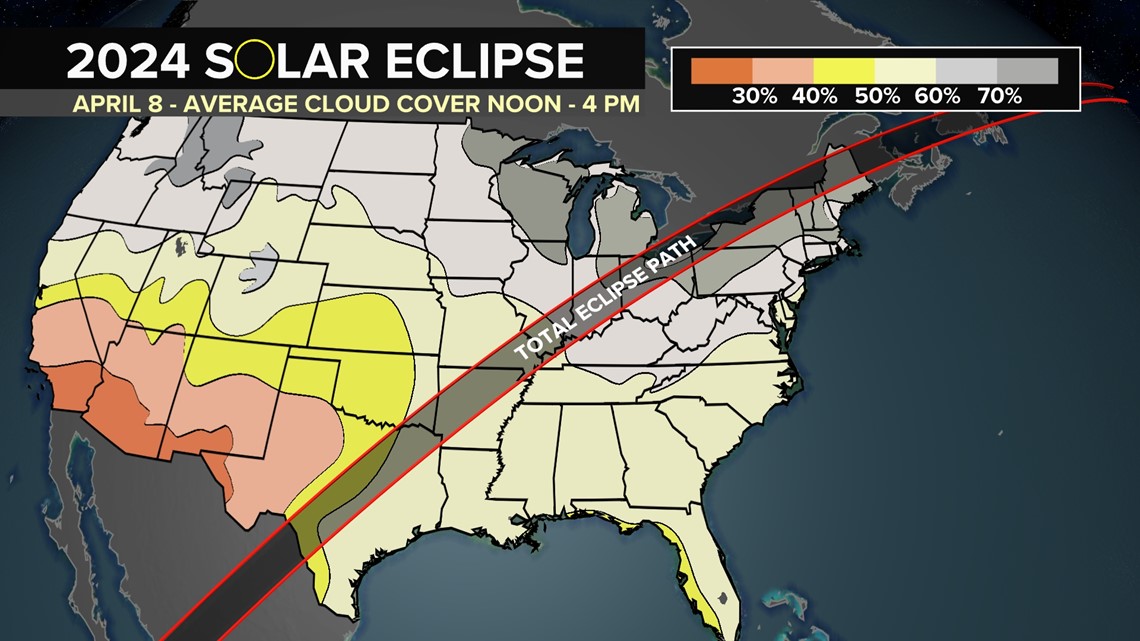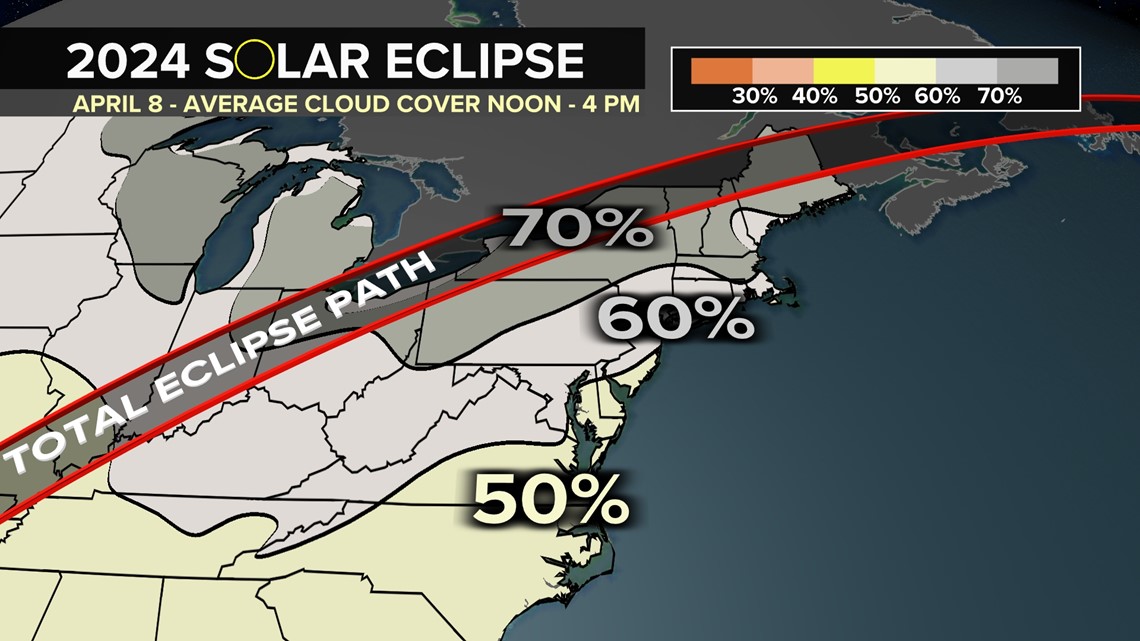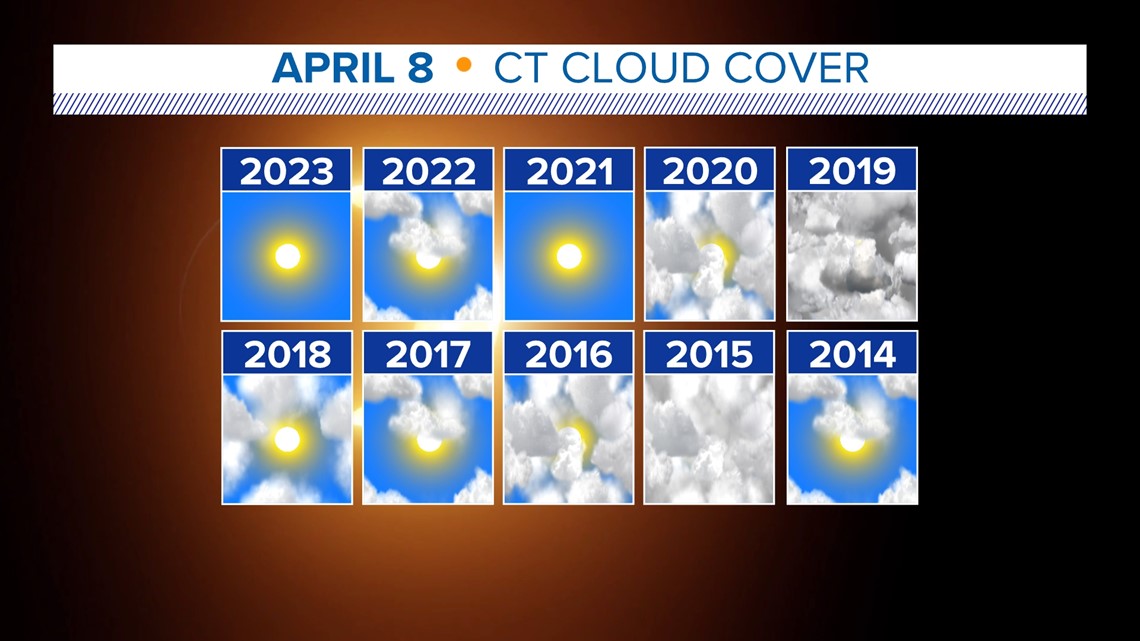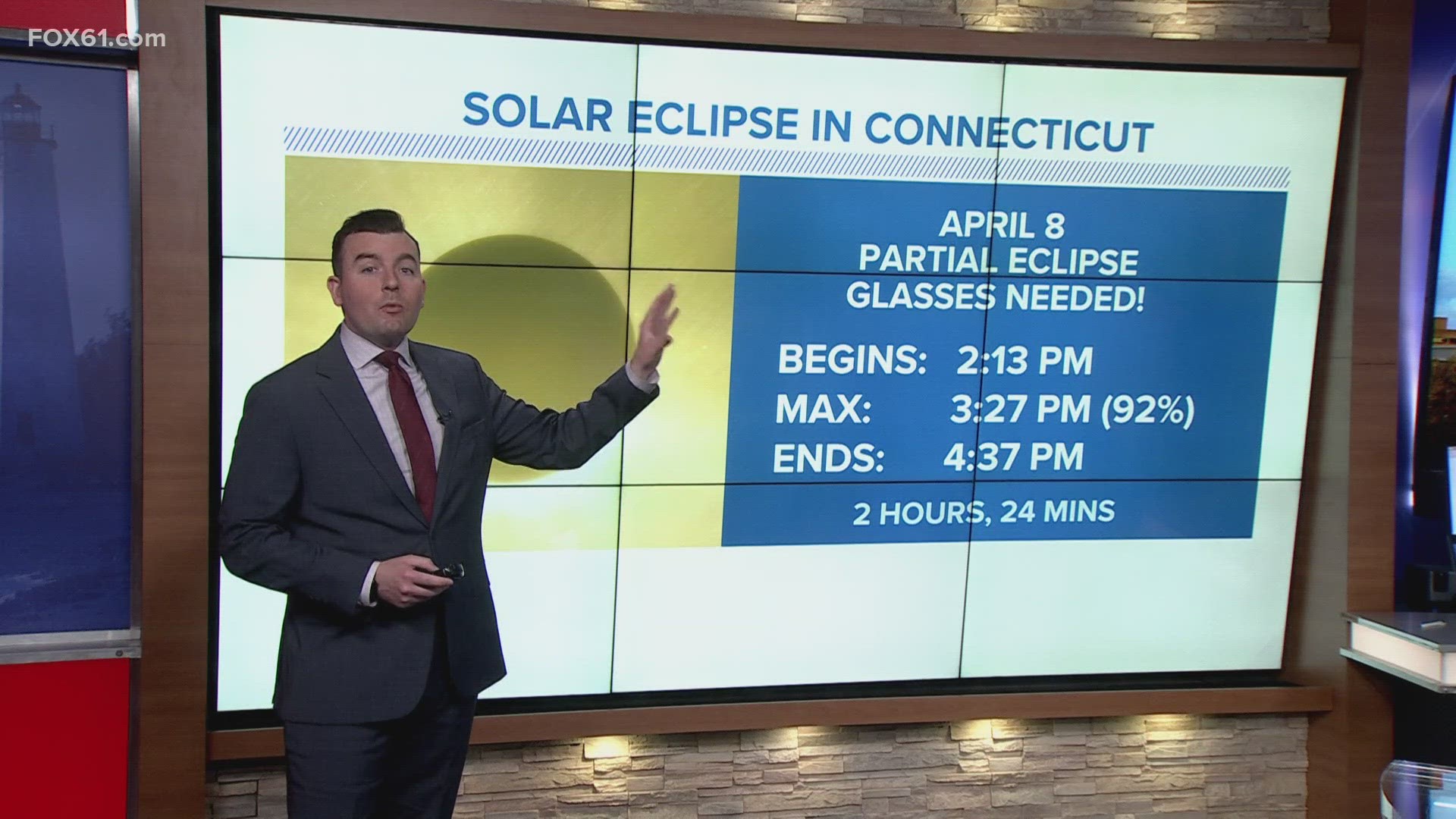CONNECTICUT, USA — The Great American Eclipse is now less than two weeks away.
It is still too soon for a specific weather forecast. The general weather pattern can be discussed about 10 days out; whether clouds or stormy weather are more likely, or whether there are promising signs for high pressure and fair weather.
Seven days out and in the days leading up to the eclipse, more specific information will be available about where the best weather for viewing will be.
For now, 14 days out, climatology is still the best guide. In other words, what the weather on April 8 tends to be, on average.
Impact of clouds on the eclipse
If the sky is clear, there will be an unobstructed view of the eclipse.
If there are clouds in the sky, their thickness and expansiveness will play a role in viewing.
High, thin cloud cover can still provide a great view. Patchy cumulus clouds with clear sky between won't completely spoil the show either.
Thicker, lower clouds or an expansive storm would greatly limit or even prevent a view of it. Those near and especially in the path of totality would still experience a darkening or dimming of the sky, but the event would be largely clouded out.
Regardless of clouds, special eclipse glasses will be needed for safe viewing. Sunglasses won't cut it! It is only safe to take them off in the path of totality for the few minutes when the sun is completely covered by the moon. Outside of that swath, they'll be needed the entire time.
Historical odds


People viewing the eclipse from locations where the moon's shadow completely covers the sun will experience a total solar eclipse. This is in a swath from Texas to Maine. During this time, no more than a few minutes long, the sky will darken as if it were dawn or dusk.
Outside of the zone shaded in black, a partial eclipse will occur, when the sun becomes blocked by part of the moon.
The map above shows the average cloud cover on April 8, during the time of the eclipse. Cloud climatology is not exact; it does not weigh in on the thickness of the clouds or their altitude, but it does provide a general guide.
The best historical chances for clear weather are in Texas, but this time of year is also known for pop-up showers and thunderstorms in the afternoon.
In the northeast, early April is often cloudy. Northern New York and northern New England's average cloud cover is 70% to 80% during the time of the eclipse.


That said, this is an average. There are exceptions, and if the sky were to be partly cloudy, people would still be in for a great show.
In Connecticut, here is a look at the last ten years of cloud cover on the afternoon of April 8.


Two out of the last 10 years, 2021 and 2023, brought mostly clear skies, and would have been near perfect days to view the eclipse.
2015 and 2019 were overcast, with even some rain.
The other years were partially cloudy, but still enough clear sky to suggest viewing would be possible.
Ryan Breton is a meteorologist at FOX61 News. He can be reached at rbreton@fox61.com. Follow him on Facebook, X and Instagram.
---
Have a story idea or something on your mind you want to share? We want to hear from you! Email us at newstips@fox61.com.
HERE ARE MORE WAYS TO GET FOX61 NEWS
Download the FOX61 News APP
iTunes: Click here to download
Google Play: Click here to download
Stream Live on ROKU: Add the channel from the ROKU store or by searching FOX61.
Steam Live on FIRE TV: Search ‘FOX61’ and click ‘Get’ to download.

